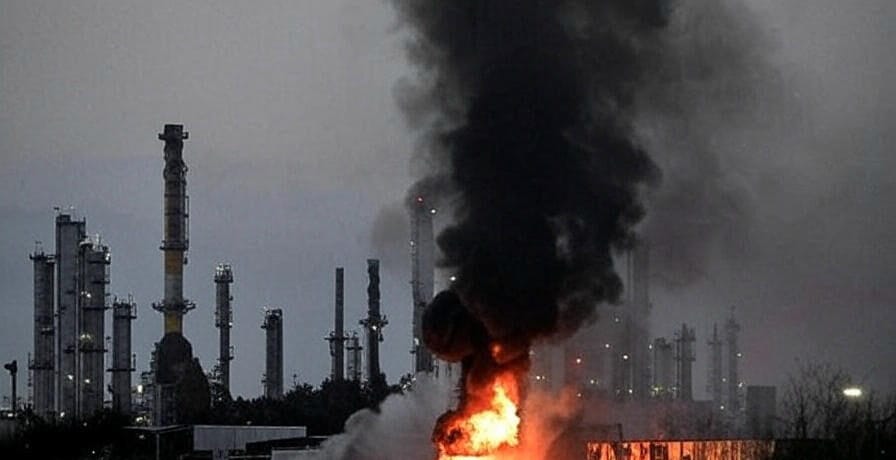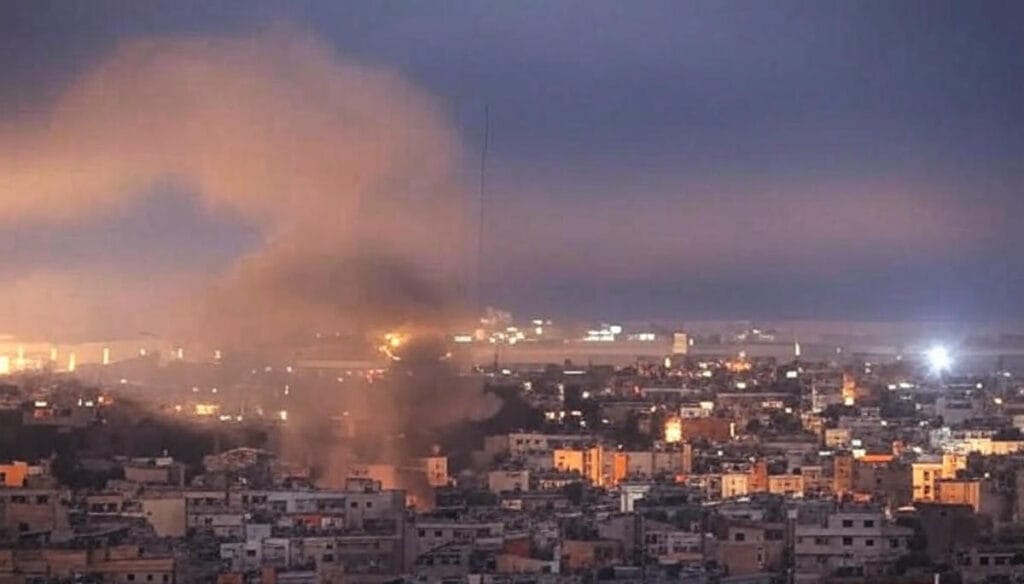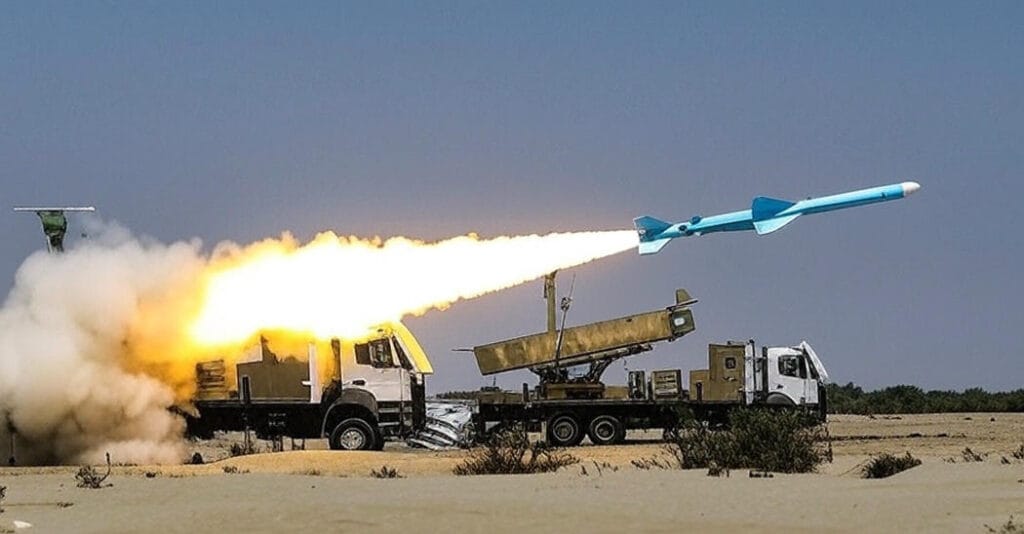
Published: June 23, 2025 | By: Global Security Insights
The Middle East stands at a precarious crossroads following Iran’s unprecedented missile attacks on U.S. military bases in Qatar and Iraq on Monday evening. The strikes, targeting the Al Udeid Air Base in Qatar and the Ain al-Asad Air Base in Iraq, mark a significant escalation in the ongoing U.S.-Iran conflict, raising fears of a broader regional war. As geopolitical tensions surge, this blog examines the context, implications, and potential pathways forward in this volatile crisis.
The Catalyst: U.S. Airstrikes on Iran’s Nuclear Facilities

The Iranian missile barrage comes as a direct response to U.S. airstrikes over the weekend that targeted three of Iran’s key nuclear facilities—Fordow, Natanz, and Isfahan. President Donald Trump, addressing the nation on Sunday, described the operation as a decisive blow to Iran’s nuclear ambitions, claiming the strikes had “obliterated” its nuclear program. While the extent of the damage remains unverified, satellite imagery and reports from regional analysts suggest significant disruption to Iran’s nuclear infrastructure.
Iranian leadership, including President Masoud Pezeshkian and Supreme Leader Ayatollah Ali Khamenei, condemned the U.S. actions as “an act of war.” In a televised address, Pezeshkian vowed that Iran would deliver a “calculated and severe” response, framing the missile strikes as a necessary defense against “American aggression.” Iran’s Tasnim news agency reported that the operation, named “Annunciation of Victory,” involved at least seven ballistic missiles, with six aimed at Al Udeid and one at Ain al-Asad.
The Targets: Strategic U.S. Bases in the Gulf and Iraq
The Al Udeid Air Base in Qatar, home to approximately 10,000 U.S. troops and the largest American military facility in the Middle East, is a critical hub for U.S. operations in the region. The base hosts the U.S. Central Command’s forward headquarters and supports air operations across the Gulf, Syria, and Afghanistan. Its strategic importance makes it a high-value target for Iran, which has long viewed U.S. military presence in the Gulf as a threat to its sovereignty.
In Iraq, the Ain al-Asad Air Base has been a frequent target of Iran-backed militia groups, particularly since the 2020 U.S. drone strike that killed Iranian General Qassem Soleimani. Monday’s missile strike on Ain al-Asad, though limited in scope, underscores Iran’s intent to project power beyond the Gulf and challenge U.S. influence in Iraq.
Qatar, caught in the crossfire, condemned Iran’s actions as a “violation of its sovereignty,” despite its delicate balancing act as a mediator between the U.S. and Iran. The Qatari government closed its airspace prior to the attack, and the U.S. and U.K. embassies issued urgent advisories for citizens to shelter in place. No casualties have been reported at either base, but the Pentagon is assessing potential damage and has pledged to “monitor and respond” to further threats.
Global Reactions and Economic Ripples

The international community has responded with alarm to the escalating conflict. The United Nations Security Council is set to convene an emergency session, while the European Union urged both sides to exercise restraint. Russia, a key ally of Iran, defended Tehran’s actions as “legitimate self-defense,” with Deputy Foreign Minister Sergei Ryabkov accusing the U.S. of “provoking chaos.” China, meanwhile, called for dialogue but stopped short of condemning Iran.
The economic fallout has been immediate. Oil prices surged by 8% on Monday, driven by fears that Iran could attempt to disrupt the Strait of Hormuz, through which 20% of global oil supplies pass. Major airlines, including American Airlines, United, and Emirates, have suspended flights to Qatar and other Gulf states, citing heightened security risks. Stock markets in Europe and Asia opened lower, reflecting investor concerns about a prolonged conflict.
The Risk of a Wider War
The missile strikes raise critical questions about the trajectory of U.S.-Iran relations and the stability of the Middle East. Iran’s decision to directly target U.S. bases, rather than relying on proxy militias, signals a shift toward bolder military action. However, Tehran’s restrained approach—using a limited number of missiles and avoiding civilian targets—suggests an intent to send a message without triggering all-out war.
For the U.S., the challenge lies in crafting a response that deters further Iranian aggression while avoiding a cycle of escalation. President Trump is reportedly meeting with his National Security Council to weigh options, which could range from targeted strikes on Iranian military assets to diplomatic efforts through intermediaries like Oman or Switzerland. The Pentagon has already bolstered its air defenses in the region, and two U.S. Navy destroyers have been deployed to the Persian Gulf.
Gulf states, particularly Saudi Arabia and the UAE, are on high alert, fearing that a U.S.-Iran conflict could engulf the region. Both countries have invested heavily in missile defense systems, but their proximity to Iran makes them vulnerable to retaliatory strikes. Iraq, already a battleground for U.S.-Iran tensions, faces the risk of further destabilization as Iran-backed militias may intensify attacks on U.S. forces.
Pathways to De-escalation
De-escalating this crisis will require deft diplomacy and international cooperation. Key steps could include:
- Backchannel Negotiations: Neutral mediators like Oman, Qatar, or Switzerland could facilitate dialogue between the U.S. and Iran to prevent further military actions.
- UN-Led Ceasefire: A UN-brokered ceasefire, coupled with an independent investigation into the U.S. airstrikes and Iran’s response, could provide a framework for de-escalation.
- Economic Incentives: Offering Iran relief from sanctions in exchange for halting missile attacks and returning to nuclear talks could create space for diplomacy.
- Regional Security Dialogue: A broader dialogue involving Gulf states, Iran, and global powers could address underlying tensions and reduce the risk of future conflicts.
Conclusion
Iran’s missile strikes on U.S. bases in Qatar and Iraq have thrust the Middle East into a dangerous new phase of conflict. While the immediate damage appears limited, the potential for miscalculation and escalation remains high. The international community must act swiftly to prevent a wider war, prioritizing diplomacy over military brinkmanship. As the world watches, the choices made by Washington, Tehran, and their allies in the coming days will shape the region’s future for years to come.
Stay tuned to Global Security Insights for updates on this developing story. Share your thoughts in the comments below or join the conversation on X.
Sources: Reuters, BBC, Al Jazeera, The Wall Street Journal, Tasnim News Agency





